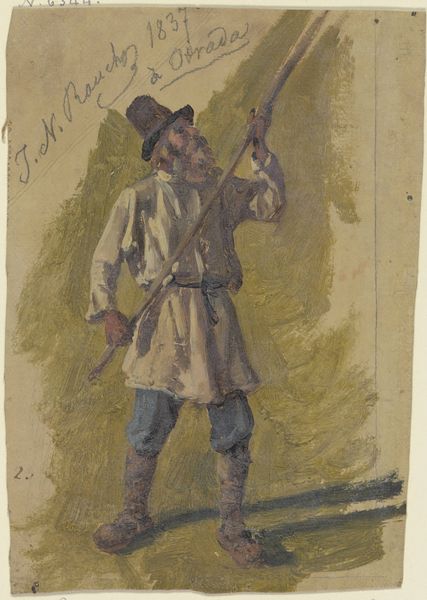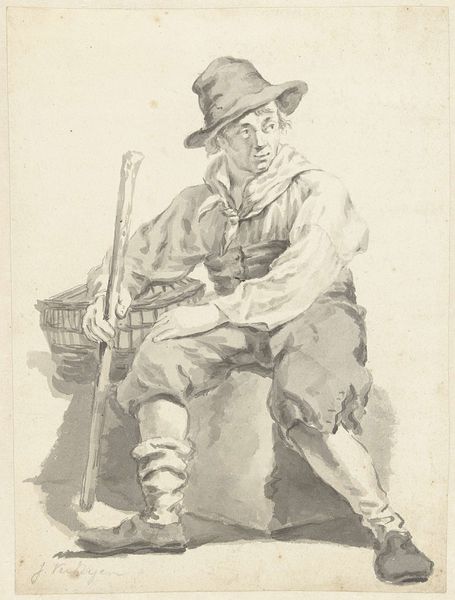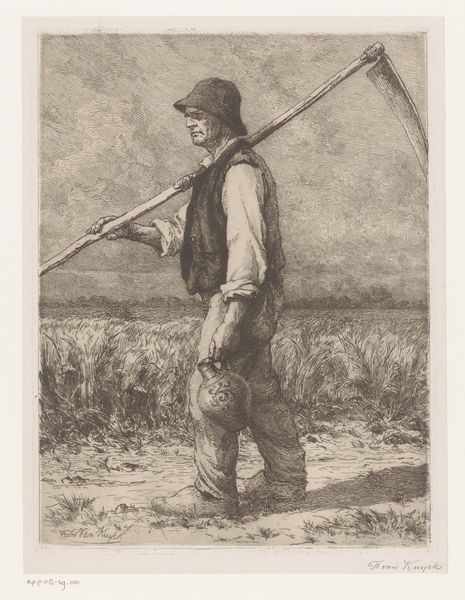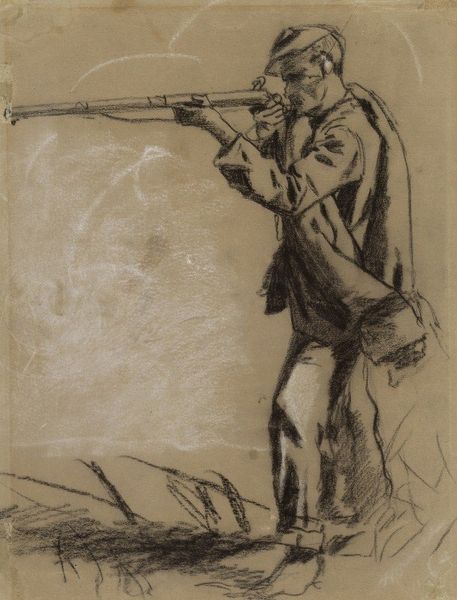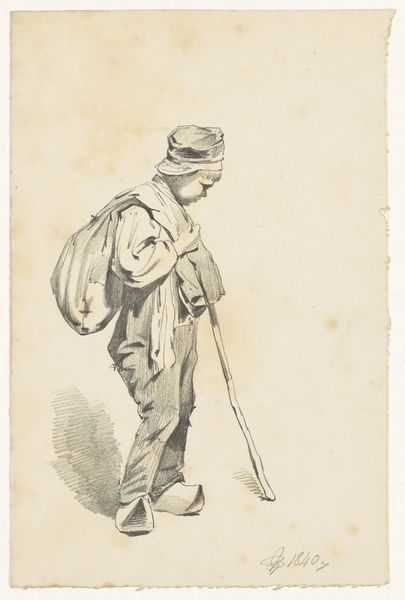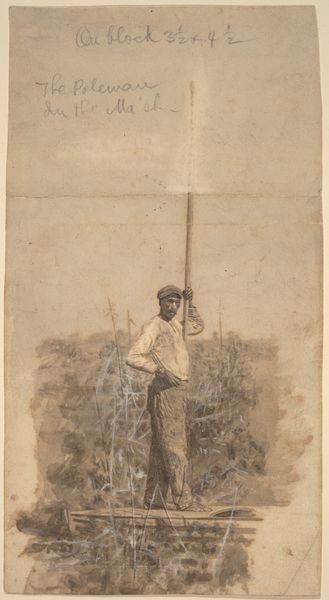
drawing, charcoal
#
portrait
#
drawing
#
charcoal drawing
#
portrait drawing
#
charcoal
#
history-painting
#
realism
Copyright: Public Domain: Artvee
Editor: Here we have Winslow Homer's "Cavalry Soldier Loading a Rifle," created between 1863 and 1864, a charcoal drawing that immediately conveys a sense of tense anticipation. The rough lines add to the immediacy. How do you read the composition of this work? Curator: The piece showcases Homer's masterful use of line and form. Consider how the diagonal of the rifle bisects the composition, creating dynamic tension. The limited use of shading forces us to focus on the contour and the suggestive nature of the medium itself. Note the careful construction of the figure through line, capturing not just physical likeness, but also a psychological presence. Editor: The soldier’s stance seems precarious. I wonder why Homer chose this specific moment. Curator: Precisely. Homer directs our attention to the formal elements to examine this unease. How does the visible texture of the charcoal on paper influence your perception of the scene? The deliberate incompleteness, the raw edges – these elements are key to its aesthetic power. The hatching strokes create a sense of depth without illusionism, maintaining a connection to the artwork's physical properties. Editor: I see now how the technique really emphasizes the anxiety. It is very evocative despite being unfinished. Curator: The work’s formal success hinges on how line, form, and tone are employed to explore a moment suspended in time. Winslow seems interested in the inherent features, focusing our attention on how the visual components are articulated rather than on representational accuracy. Editor: It’s fascinating how the visual elements alone can convey such a strong feeling! Curator: Absolutely. Studying these elements teaches us to truly *see* the artwork and how those choices, independent of any social commentary, produce emotion.
Comments
No comments
Be the first to comment and join the conversation on the ultimate creative platform.

